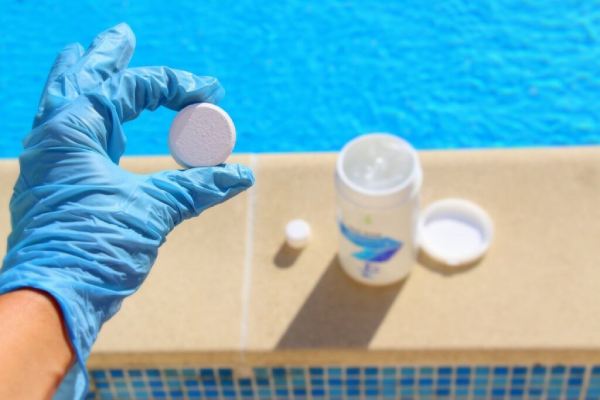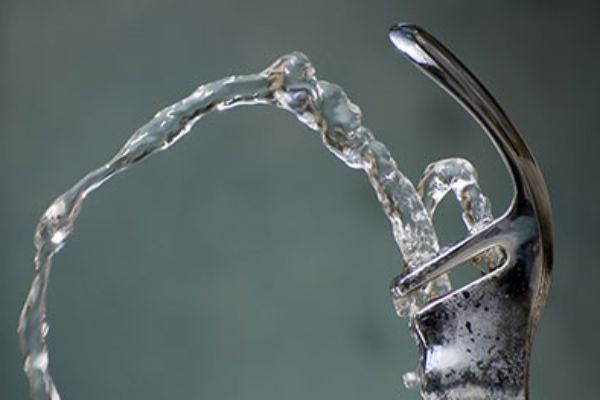How to Paint a Fountain: 10 DIY Guide Made Easy
Are you planning to get a new fountain because the one you have is already old? The truth is, getting a new fountain can be exhausting and expensive. However, you can breathe new life into your old fountain with some hard work and a fresh coat of paint.
You know having a lovely fountain in your outdoor space doesn’t only improve its look and feel but also adds a touch of elegance and tranquility.
If you have an old fountain you wish to transform then keep reading because in this blog post you will get to know all there is to know about how to paint a fountain.
Not just that, we are going to discuss in detail how to paint all types of fountains you may think of, so keep scrolling.
But before that, let’s look at the do’s and don’ts of painting a fountain
Do’s and Don’ts of Painting a Fountain
Painting a fountain is an easy and inexpensive way to update the aesthetic of your garden or patio.
If you want your painting project to turn out well, however, there are a few things you shouldn’t do and other things you should.
To assist you in obtaining a beautiful and long-lasting finishing on your fountain, we will go over some important dos and don’ts of painting a fountain.
Do’s of painting a water fountain
- When painting fountains, make sure to pick a paint that is made specifically for the type of fountain you intend to paint.
- Before you start painting, make sure the fountain is completely free of any dirt, dust, or debris by giving it a good clean. You can scrub the area with a wire brush and a solution of dish soap and water.
- Priming the fountain before painting can help give a uniform surface for the paint to cling to, so it’s a good idea to do that.
- Do invest in high-quality brushes or rollers, as these will facilitate an even and smooth paint application and a more polished final result.
- Drop cloths or plastic sheeting should be used to cover the ground around the painting area to prevent damage from paint splatters and drips.
Don’ts of painting a water fountain
- Don’t rush the fountain painting process. Take your time and do a thorough job to avoid any sloppy results.
- When painting fountains, don’t forget to seal the painted surface to protect it and extend its life span.
- Avoid painting in bright sunlight, as doing so might hasten paint drying to the point where a poor finishing is the consequence. If you can, paint when it’s cooler or in the shade.
- Don’t forget to sand the fountain’s surface in order to achieve a smooth surface and good paint adhesion.
Now, here are the things needed to paint a water fountain.
- Paint Primer
- Paintbrushes
- Cans of paint
- Sandpaper
- Garden hose
- Drop cloths
- Protective gear like gloves, goggles, and masks
- Waterproof sealer
- Sanding block
- Wire brush
- Rust remover for metallic fountains
- Scraper for paint
- Caulk for sealing holes
- Filler
- Towels or sponges
- Filler knife
Now that you have known the materials needed for painting a fountain, let’s quickly look at the different types of fountains.
Types of fountains
There are different types of fountains, and all will be discussed in detail in this section. We will also discuss the type of paint you should use for each of the fountains.
Fiberglass
Outdoor areas benefit greatly from the aesthetic and long-lasting nature of fiberglass fountains.
You know, they can resist severe climates while still being portable and simple to maintain.
If you have a fiberglass fountain, you can make it look new by painting it. But how do you paint it, and what kind of paint do you need? These questions will be answered in this section.
Selecting the proper paint for your fiberglass fountain is the first step. You need to find a paint that is made specifically for fiberglass. Epoxy pool paint is one example of a paint that is designed to cling to fiberglass since it is water-based and contains unique bonding ingredients.
You have to prime the surface of your fiberglass fountain before you begin painting it and the fountain needs a good cleaning for this to work.
One cup of bleach in one gallon of water and a bristle brush will get the job done. Clean the area well, being sure to get into any cracks or crevices, and then apply a fresh layer of paint.
Start by painting a very light coat in even strokes. If you use too much paint at once, it will drip, and the surface won’t be evenly covered.
Concrete
Fountains made of concrete are ever-popular choice. They last for a long time, don’t need much maintenance, and can make any outdoor space look more refined.
However, the concrete may become discoloured or fade over time, causing the fountain to lose its luster and making you think of painting it in order to give it a new look.
The first step in painting a concrete fountain is picking the correct paint. You should probably go with a paint that has been formulated for use on concrete.
Paints with oil-based pigments, such as oil-based stains and paints, exterior latex paints, and masonry paints, are ideal for this task.
Now, here’s a very important point to note; while purchasing paint for your concrete fountain, be on the lookout for words like “garage floor” or “concrete surfaces” to make sure you purchase the proper paint.
There are many different sealers available, so it’s important to select one that works with the paint you end up using.
After choosing the right paint, clean the surface with water and a grease-cutting dishwasher detergent. Then wait for it to dry before beginning the actual painting.
After the fountain has dried completely, apply a sealer. This will permeate the pores of the concrete, providing a surface area for the paint and primer to adhere to.
Wait for the sealer to dry up. Apply a primer, then wait for it to dry completely before painting. Painting can be done using either a brush or a spray can. After painting, give it 24 hours to dry completely.
Metal
Metal fountains not only improve the overall aesthetic, but the trickling water also helps to create a relaxing atmosphere.
If you want to give your metal fountain a better look by painting it, use either an oil-based paint or 100% acrylic latex paint.
But before painting, dust and debris that have gathered on the fountain’s surface must be removed. You can prepare the surface of your fountain for painting by cleaning it with vinegar or turpentine. It’s important to let the fountain air dry after cleaning it.
Don’t forget to put on protective gear like gloves and a mask before beginning to paint so that you don’t inhale paint fumes or get paint on your skin. Before painting, you’ll also need to apply an anti-rust primer specifically designed for metal.
You can use any method you like best, be it a brush, roller, or spray gun, to paint the fountain. Apply paint using a brush or roller in thin, even coats and wait for each coat to dry before adding another.
You know, metal fountains have a lot of nooks and crannies and detailed decorations that need to be painted carefully, to obtain comprehensive coverage in these spots, you may need to use a smaller brush.
Resin
The added sophistication of a resin fountain makes it a wonderful addition to any house or outdoor space.
You may be wondering how to paint your new resin fountain so that it fits in with your existing aesthetic.
To get the best results when painting a resin fountain, choose a paint made specifically for plastic, like Krylon Fusion.
You can prime the resin fountain for painting by sanding it down with medium-grit sandpaper. The paint, primer, and sealer will penetrate deeper and adhere more securely to the prepared surface.
Also, make sure that your resin fountain is clean before you start painting it. One cup of bleach in a gallon of warm water can be used for cleaning.
After cleaning, begin painting your fountain by applying a thin coat of paint with a brush or roller. Be sure to focus on manageable chunks, working from the top down.
Other useful tips for painting a fountain
When selecting paints and other materials for your fountain, it’s important to consider your environment.
Choose materials that can withstand moisture. After all, the point of a fountain is to get wet.
In the case of concrete or cast stone fountains, improper painting and maintenance can lead to the absorption of water and subsequent breakdown.
So, how do you make your newly painted water fountains last? Well, it’s important to start with a solid foundation by purchasing compatible waterproof paints, primers, and sealers.
In addition to extending the longevity of your fountain, this will also keep the colours looking bright and new.
Waterproof materials can also shield your fountain from the harmful effects of the sun and erosion.
If your fountain has old cracked paint or peeling paint, do remove them before you start painting. Also remove any loose paint by cleaning the area and chipping or scraping it off.
Vinegar can also be used as an eco-friendly alternative to paint thinner when removing old paint.
Most importantly, make sure the surface is completely dry and clean before painting.
How to paint an outdoor cement fountain
If you have an outdoor cement fountain that needs to be painted, do follow these simple steps to paint it and make it super lovely.
Clean the fountain
It’s important to give the fountain’s surface a good scrub before painting it. Cleaning dirt, debris, or flaking paint can be done using a power washer, a stiff-bristled brush, soap, and water. After you’re done cleaning, give the area plenty of time to dry out.
Get rid of the old paint
If the fountain has been previously painted, the old paint must be stripped off before the new paint can be applied. To get rid of the old paint, you can use a paint stripper, a scraper, and sandpaper.
Prepare the surface
Once the old paint has been stripped away, the surface must be made ready for a new coat of paint.
You can improve paint adhesion by using a concrete etcher to create a rougher surface.
Apply concrete sealer
After preparing the surface, apply a concrete sealer. Use a paint brush so that you can reach all the intricate details. After applying the sealer, wait for about 24 hours for it to completely dry.
Apply a primer
Apply a primer made for cement on the surface before painting it. The paint will stick better and the surface will be protected. Don’t start painting until the primer has dried.
Paint the fountain
After priming the surface, the next step is to paint the fountain.
To paint the fountain, use paint that is both waterproof and long-lasting. Apply the paint evenly to the surface with a paintbrush or roller.
It may take several coats to get the desired effect, so make sure to wait for each one to dry before adding more.
Use a sealant on the surface
After the paint has dried up, you will have to protect the surface by sealing it with a sealer.
This will shield the painted surface from rain, sunlight, and other environmental hazards.
Conclusion
Now that you have known how to paint a fountain, you can give your garden or outdoor space a new look by painting your old fountain.
To get a stunning and long-standing result, do follow all the techniques in this blog post.
FAQs
You can use a concrete sealer or a thick concrete coating to seal your fountain
You can use a homemade solution of half distilled white vinegar and half water to clean your fountain.
A well-maintained fountain made of durable materials will serve its purpose for many years.

![Here’s Why Your Fountain Loses Water [9 Reasons & Quick Fix]](https://pondmemo.com/wp-content/uploads/2023/11/why-your-fountain-loses-water-IMG_1.jpg)

![8 Best Paints For Water Features [Full Review]](https://pondmemo.com/wp-content/uploads/2023/08/best-paints-for-water-features-img_1.jpg)

![Wiring an Outdoor Water Fountain – [Safe DIY Guide]](https://pondmemo.com/wp-content/uploads/2023/08/wiring-an-outdoor-water-fountain-IMG_1.jpg)
![How to Stop a Fountain from Splashing [Indoor & Garden]](https://pondmemo.com/wp-content/uploads/2023/06/how-to-stop-a-fountain-from-splashing-1-IMG.jpg)